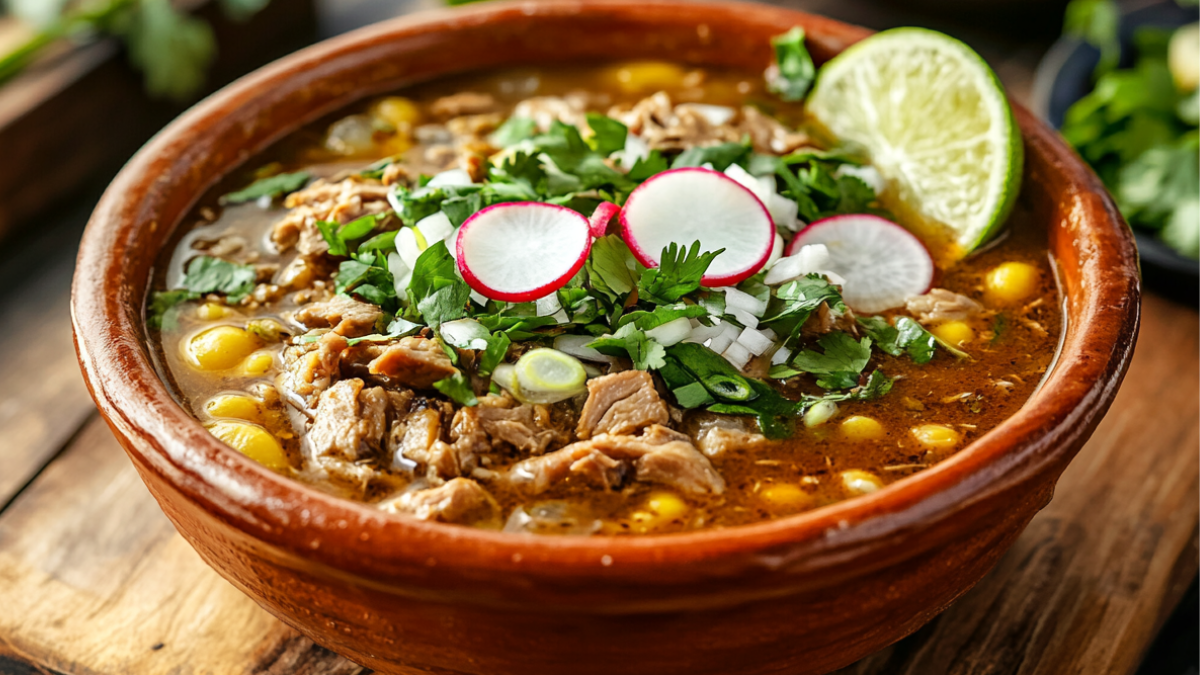The Ultimate Guide to Mexican Stew: A Flavorful Culinary Journey
Introduction
Few dishes evoke the warmth and richness of Mexican cuisine like a hearty Mexican stew. Packed with vibrant flavors, these stews are a cornerstone of traditional Mexican cooking, blending indigenous and Spanish influences into a comforting meal. From pozole to birria, Mexican stews showcase the country’s diverse culinary heritage and regional specialties.
Whether you’re new to Mexican cooking or a seasoned enthusiast, exploring these stews is a rewarding experience. To truly appreciate the depth of Mexican stews, understanding their history and preparation methods is key.
Historical Background of Mexican Stew
The roots of Mexican stews stretch back centuries, combining the ingredients of indigenous peoples with the techniques brought by Spanish colonists. These dishes often incorporate local staples such as chiles, corn, and beans, along with European meats and spices.
Regional adaptations also highlight the diversity of Mexican cuisine.
Key Ingredients in Mexican Stew
The magic of a Mexican stew lies in its ingredients. Here’s what you’ll commonly find:
- Proteins: Beef, pork, chicken, goat, or seafood.
- Vegetables: Tomatoes, onions, potatoes, and peppers.
- Chiles: Ancho, guajillo, and pasilla chiles add smoky, spicy depth.
- Herbs and Spices: Cumin, oregano, and fresh cilantro.
- Unique Components: Hominy, nopales (cactus), and masa.
These ingredients come together to create a harmonious balance of heat, tang, and umami, making every Mexican stew a celebration of flavor.
Popular Types of Mexican Stew
Pozole
A hominy-based stew often made with pork or chicken, pozole comes in three main variations:
- Rojo (red): Made with red chiles for a rich, bold flavor.
- Verde (green): Featuring green tomatillos and fresh herbs.
- Blanco (white): A simpler version without chiles.
Pozole is traditionally served with garnishes like shredded cabbage, radishes, lime wedges, and tostadas.
Birria
This spiced meat stew, traditionally made with goat or beef, has gained international fame. Often enjoyed as tacos or consommé, birria is a star at weddings and celebrations.
Caldo de Res
A hearty beef and vegetable soup that’s perfect for chilly days. It’s loaded with chunks of beef, corn, carrots, and squash.
Menudo
A tripe stew known for its bold flavor and cultural significance, menudo is a classic hangover cure and a staple at family gatherings.
Carne Guisada
This beef stew features a thick, flavorful gravy seasoned with cumin, jalapeños, and chili powder. It’s often paired with rice or tortillas.
Regional Variations of Mexican Stew
Each region of Mexico brings its unique twist to stews:
- Yucatán: Relleno negro, a turkey stew with a deep black sauce made from charred chiles.
- Puebla: Manchamanteles, a sweet and savory stew with fruits and meat.
- Jalisco: The birthplace of birria, with its robust, spiced flavors.
Health Benefits of Mexican Stew
Mexican stews are as nutritious as they are delicious:
- High in protein and fiber.
- Packed with vitamins from fresh vegetables.
- Boost immunity with antioxidant-rich spices like oregano and chiles.
Cooking Techniques
To create an authentic Mexican stew, traditional methods are essential:
- Slow-Cooking: This enhances the depth of flavor.
- Clay Pots: Used historically, they impart a unique earthy taste.
- Layering Flavors: Toasting spices and roasting chiles elevate the dish.
Step-by-Step Recipe: Classic Pozole Rojo
Ingredients:
- 2 lbs pork shoulder, cubed
- 1 can hominy, drained
- 5 dried guajillo chiles
- 2 dried ancho chiles
- 1 onion, chopped
- 3 cloves garlic
- 1 tsp oregano
- Salt and pepper to taste
Instructions:
- Soak chiles in warm water until soft, then blend into a smooth paste.
- Sear pork in a pot until browned. Remove and set aside.
- Sauté onions and garlic until fragrant. Add chile paste and cook for 5 minutes.
- Return pork to the pot, add hominy, oregano, and water to cover.
- Simmer for 2 hours until pork is tender. Season with salt and pepper.
- Serve with shredded cabbage, lime wedges, and radishes.
FAQs
What is the difference between pozole and menudo?
Pozole uses hominy and often pork, while menudo is a tripe stew with a spiced broth.
Can I make Mexican stews vegetarian?
Yes! Substitute meat with beans, tofu, or jackfruit.
What sides pair well with Mexican stew?
Corn tortillas, rice, and avocado slices are classic choices.
How can I control the spiciness?
Adjust the number and type of chiles used, or remove seeds for milder heat.
Why is hominy important in Mexican stew?
Hominy adds texture and absorbs flavors beautifully, making it a staple ingredient.
Conclusion
Exploring Mexican stews opens up a world of flavors and traditions. These hearty dishes are more than meals; they’re a connection to Mexican culture and history. Whether it’s a comforting bowl of caldo de res or a festive serving of pozole, Mexican stews offer something for everyone. Start your culinary adventure today and bring the taste of Mexico to your table!
Suggested Internal Links
- Carnitas Breakfast Recipe with Eggs: Explore a breakfast option that complements Mexican stews.
- Korean Bulgogi Chicken Recipe: Discover global fusion ideas inspired by Mexican stews.
- Stewing Chicken: Tips for selecting and preparing chicken for stews.
- Beef Stew Seasoning: Enhance the flavors of your beef-based stews.
- Carne en su Jugo: Highlight a regional specialty similar to pozole or birria.
- Brioche Dinner Rolls Recipe: Pair with stews for a complete meal.
- Mexican Breakfast: Create a breakfast feast alongside stews.
- Turkey Harvest Stew: Try an alternative stew featuring turkey.

